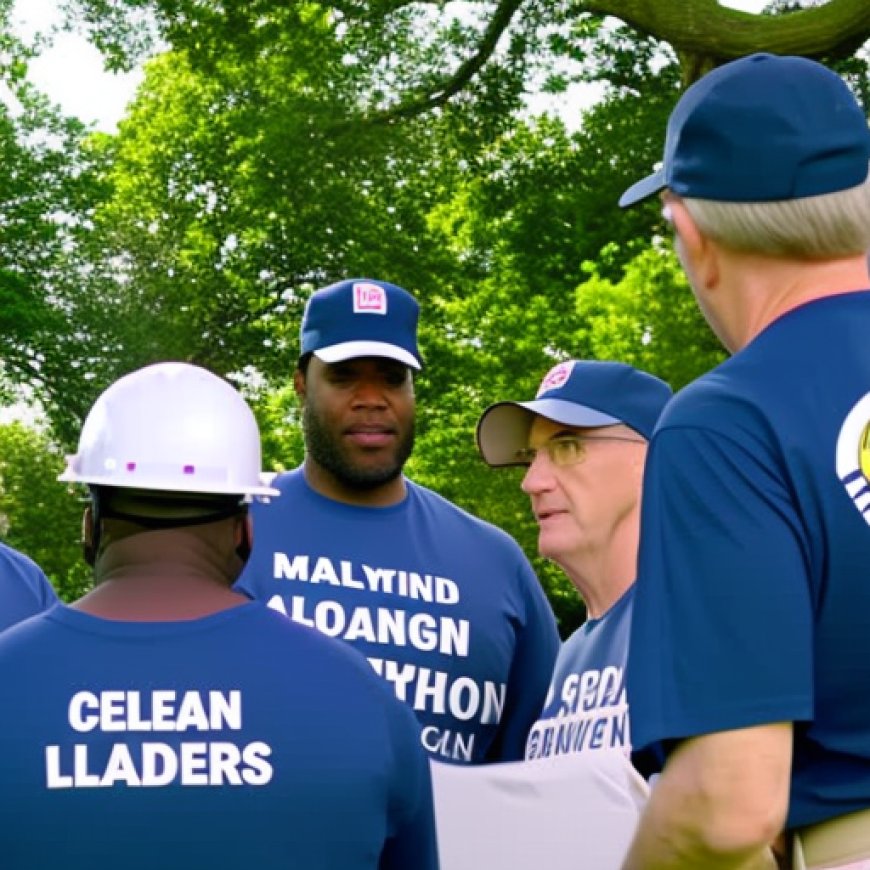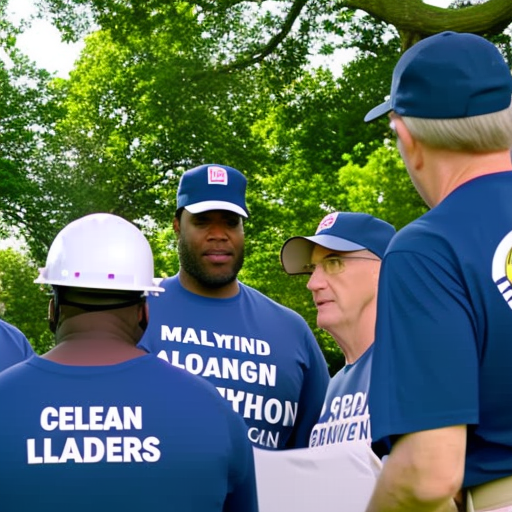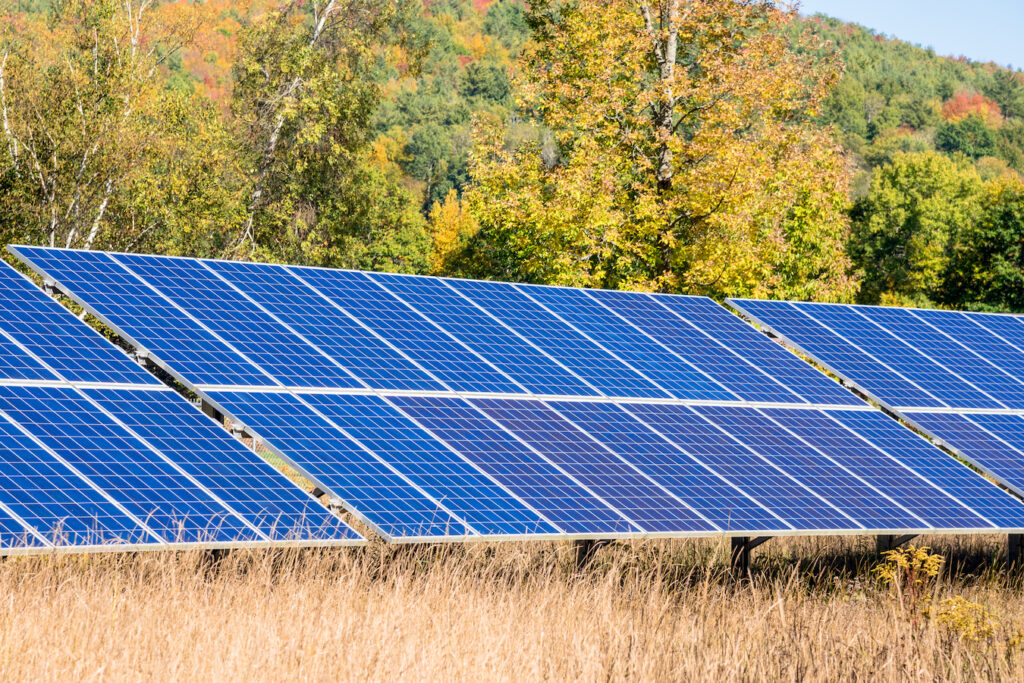Environmental leaders push for transparency on state’s clean energy program – Maryland Matters
Environmental leaders push for transparency on state's clean energy program Maryland Matters


Report on Maryland’s Renewable Energy Program

Introduction
Eight environmental leaders are pressing Maryland energy regulators for more transparency on how the state’s renewable energy program is handled — and how the state hands out financial credits for entities that generate renewable energy. In a letter sent Tuesday to the five members of the Maryland Public Service Commission, the green groups suggest that the state’s renewable energy program isn’t delivering on its promise.
Sustainable Development Goals (SDGs)
The Sustainable Development Goals (SDGs) are a set of global goals adopted by the United Nations in 2015 to achieve a more sustainable future for all. They address various social, economic, and environmental challenges, including affordable and clean energy (SDG 7), climate action (SDG 13), and responsible consumption and production (SDG 12).
Renewable Portfolio Standard (RPS)
The PSC, the public utility regulator in Maryland, issues an annual report on how the state’s Renewable Portfolio Standard (RPS), which sets goals for renewable energy generation in the state, is performing. The state has established several categories for what constitutes renewable energy, and companies receive financial incentives from the state for using and generating renewable fuels.
Complaints and Requests for Transparency
But the program has drawn complaints through the years, particularly as trash burning waste-to-energy facilities and other controversial energy sources continue to receive renewable energy credits. In their letter, the eight groups ask the commissioners to include much more information in the next annual report, due to be delivered late in the year, including whether the program is working as intended.
Key Information Omitted
Past PSC reports issued under the Hogan administration omitted critical data, the environmental groups assert, including:
- The price of renewable energy credits (RECs) by fuel source, so that ratepayers can tell what value they are getting from their dollars invested in different sources of electricity, such as wind, incineration, and biomass;
- The age of facilities selling RECs to Maryland energy providers to ascertain whether the state’s RPS is spurring development of new renewable energy or merely subsidizing older facilities that predate the RPS’s existence; and
- The names of facilities selling RECs into Maryland, and the number of RECs, so that ratepayers can tell what companies are profiting from the program. This information was included in prior reports but was removed from the 2022 report.
Call for Compliance Check
In addition, the groups are asking that the PSC conduct a compliance check to make sure that renewable energy credits sold in Maryland are generated by facilities that meet eligibility requirements, including the environmental standards that waste-to-energy facilities must meet.
Estimated Costs and Criticisms
Whitehouse estimated that between 2008, when the Renewable Portfolio Standard first went into effect, and 2030, Maryland ratepayers may spend close to a billion dollars subsidizing the state’s RPS program. PEER, a national group, has long been critical of the program, issuing a report in early 2022 calling it a “dirty energy ripoff.”
Signatories and Potential Changes
Joining Whitehouse in signing the letter: Jennifer Kunze, Maryland coordinator of Clean Water Action; Sonia Demiray, co-founder of the Climate Communications Coalition; Jorge Aguilar, Southern region director of Food & Water Watch; Laurel Peltier, chair of the Maryland Energy Advocates Coalition; Annie Bristow, convener of the Mountain Maryland Movement; Gabby Ross, founder of Concerned Citizens Against Industrial CAFOs; and Shashawnda Campbell, environmental justice Coordinator of South Baltimore Community Land Trust. Gov. Wes Moore (D) has sought to remake the Public Service Commission since he took office in mid-January: Three of the five commissioners are Moore appointees. Whether the new regime issues a dramatically different report on the RPS remains to be seen.
SDGs, Targets, and Indicators Analysis
1. Which SDGs are addressed or connected to the issues highlighted in the article?
- SDG 7: Affordable and Clean Energy
- SDG 12: Responsible Consumption and Production
- SDG 13: Climate Action
- SDG 15: Life on Land
The article discusses Maryland’s renewable energy program and the need for transparency in how it is handled. This connects to SDG 7, which focuses on ensuring access to affordable, reliable, sustainable, and modern energy for all. The article also mentions the use of waste-to-energy facilities and controversial energy sources, which relates to SDG 12’s target of promoting sustainable consumption and production. Additionally, the article highlights the importance of environmental standards for waste-to-energy facilities, aligning with SDG 13’s goal of taking urgent action to combat climate change. Lastly, SDG 15, which aims to protect, restore, and promote sustainable use of terrestrial ecosystems, is relevant as the article discusses the impact of renewable energy generation on land.
2. What specific targets under those SDGs can be identified based on the article’s content?
- SDG 7.2: Increase substantially the share of renewable energy in the global energy mix.
- SDG 12.4: By 2020, achieve the environmentally sound management of chemicals and all wastes throughout their life cycle.
- SDG 13.2: Integrate climate change measures into national policies, strategies, and planning.
- SDG 15.5: Take urgent and significant action to reduce degradation of natural habitats, halt the loss of biodiversity, and protect and prevent the extinction of threatened species.
Based on the article’s content, the targets identified are directly related to the SDGs mentioned. SDG 7.2 is relevant as it focuses on increasing the share of renewable energy, which is the main concern of the article. SDG 12.4 is applicable as it emphasizes the need for environmentally sound management of waste, including waste from energy generation. SDG 13.2 is connected because integrating climate change measures into policies is crucial for addressing the concerns raised in the article. Lastly, SDG 15.5 is relevant as it emphasizes the need to take action to protect natural habitats and prevent biodiversity loss.
3. Are there any indicators mentioned or implied in the article that can be used to measure progress towards the identified targets?
Yes, there are indicators mentioned or implied in the article that can be used to measure progress towards the identified targets. These include:
- Price of renewable energy credits (RECs) by fuel source: This indicator can measure progress towards SDG 7.2 by assessing the share of renewable energy sources in the energy mix and their cost-effectiveness.
- Age of facilities selling RECs: This indicator can measure progress towards SDG 12.4 by determining whether the renewable energy program is spurring the development of new facilities or merely subsidizing older ones.
- Names of facilities selling RECs and the number of RECs: This indicator can measure progress towards SDG 12.4 and SDG 15.5 by providing transparency on which companies are profiting from the program and whether their operations align with environmental standards.
- Compliance check for eligibility requirements: This indicator can measure progress towards SDG 12.4 and SDG 13.2 by ensuring that renewable energy credits are generated by facilities that meet environmental standards and contribute to climate change mitigation.
These indicators mentioned in the article can be used to assess progress towards the identified targets by providing data on the effectiveness, environmental impact, and transparency of Maryland’s renewable energy program.
SDGs, Targets, and Indicators Table
| SDGs | Targets | Indicators | |
|---|---|---|---|
| SDG 7: Affordable and Clean Energy | 7.2: Increase substantially the share of renewable energy in the global energy mix. | Price of renewable energy credits (RECs) by fuel source | |
| SDG 12: Responsible Consumption and Production | 12.4: By 2020, achieve the environmentally sound management of chemicals and all wastes throughout their life cycle. | Age of facilities selling RECs | Names of facilities selling RECs and the number of RECs |
| SDG 13: Climate Action | 13.2: Integrate climate change measures into national policies, strategies, and planning. | Compliance check for eligibility requirements | |
| SDG 15: Life on Land | 15.5: Take urgent and significant action to reduce degradation of natural habitats, halt the loss of biodiversity, and protect and prevent the extinction of threatened species. | Names of facilities selling RECs and the number of RECs |
Behold! This splendid article springs forth from the wellspring of knowledge, shaped by a wondrous proprietary AI technology that delved into a vast ocean of data, illuminating the path towards the Sustainable Development Goals. Remember that all rights are reserved by SDG Investors LLC, empowering us to champion progress together.
Source: marylandmatters.org

Join us, as fellow seekers of change, on a transformative journey at https://sdgtalks.ai/welcome, where you can become a member and actively contribute to shaping a brighter future.







